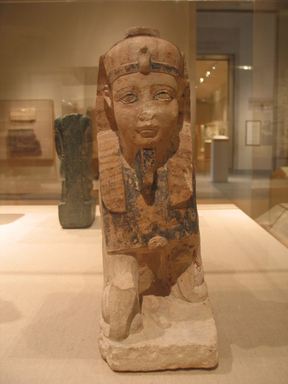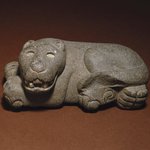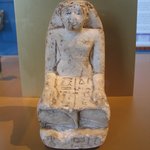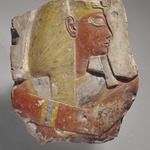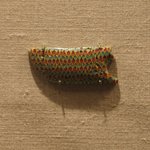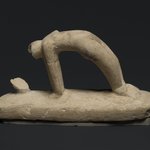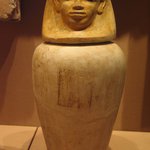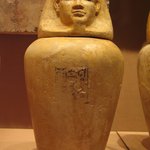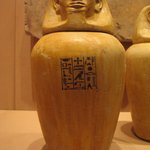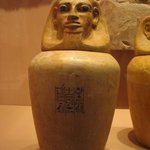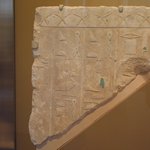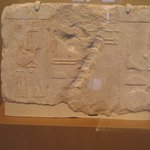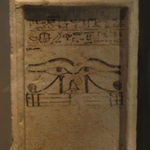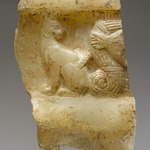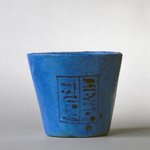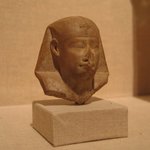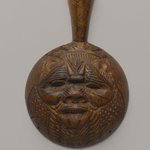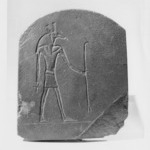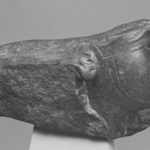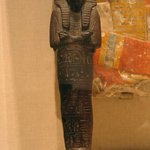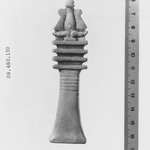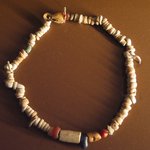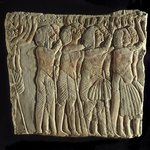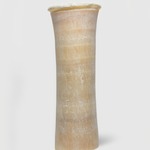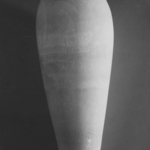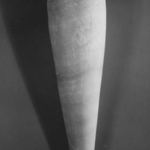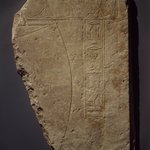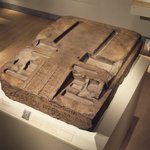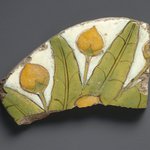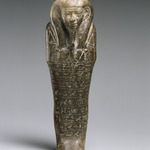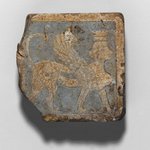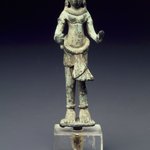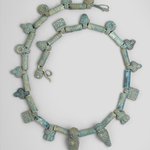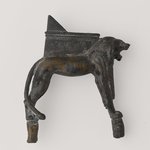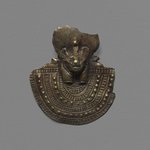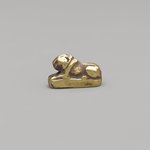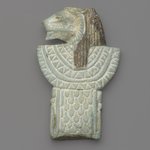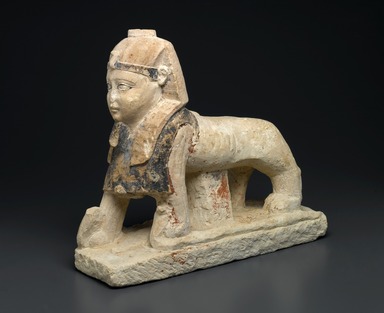

God Tutu as a Sphinx, 1st century C.E. or later. Limestone, pigment, 14 1/4 x 5 1/16 x 16 11/16 in. (36.2 x 12.8 x 42.4 cm). Brooklyn Museum, Charles Edwin Wilbour Fund, 37.1509E. Creative Commons-BY (Photo: Brooklyn Museum, 37.1509E_threequarterleft_PS1.jpg)
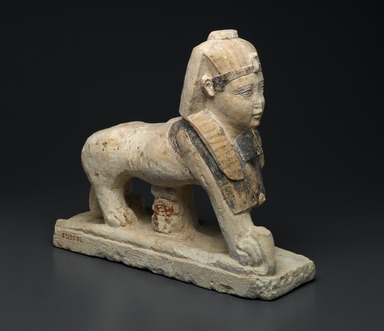
God Tutu as a Sphinx, 1st century C.E. or later. Limestone, pigment, 14 1/4 x 5 1/16 x 16 11/16 in. (36.2 x 12.8 x 42.4 cm). Brooklyn Museum, Charles Edwin Wilbour Fund, 37.1509E. Creative Commons-BY (Photo: Brooklyn Museum, 37.1509E_threequarterright_PS1.jpg)
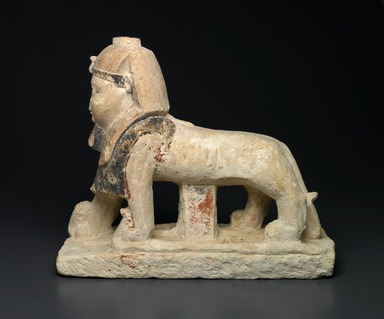
God Tutu as a Sphinx, 1st century C.E. or later. Limestone, pigment, 14 1/4 x 5 1/16 x 16 11/16 in. (36.2 x 12.8 x 42.4 cm). Brooklyn Museum, Charles Edwin Wilbour Fund, 37.1509E. Creative Commons-BY (Photo: Brooklyn Museum, 37.1509E_leftside_PS1.jpg)
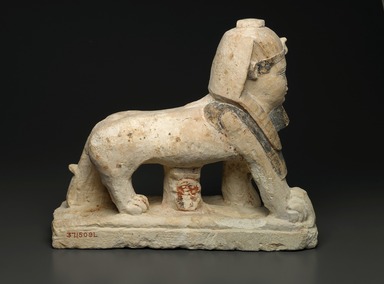
God Tutu as a Sphinx, 1st century C.E. or later. Limestone, pigment, 14 1/4 x 5 1/16 x 16 11/16 in. (36.2 x 12.8 x 42.4 cm). Brooklyn Museum, Charles Edwin Wilbour Fund, 37.1509E. Creative Commons-BY (Photo: Brooklyn Museum, 37.1509E_rightside_PS1.jpg)

God Tutu as a Sphinx, 1st century C.E. or later. Limestone, pigment, 14 1/4 x 5 1/16 x 16 11/16 in. (36.2 x 12.8 x 42.4 cm). Brooklyn Museum, Charles Edwin Wilbour Fund, 37.1509E. Creative Commons-BY (Photo: Brooklyn Museum, 37.1509E_front_PS1.jpg)
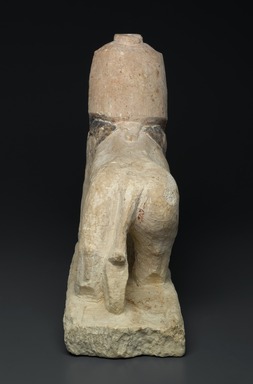
God Tutu as a Sphinx, 1st century C.E. or later. Limestone, pigment, 14 1/4 x 5 1/16 x 16 11/16 in. (36.2 x 12.8 x 42.4 cm). Brooklyn Museum, Charles Edwin Wilbour Fund, 37.1509E. Creative Commons-BY (Photo: Brooklyn Museum, 37.1509E_back_PS1.jpg)
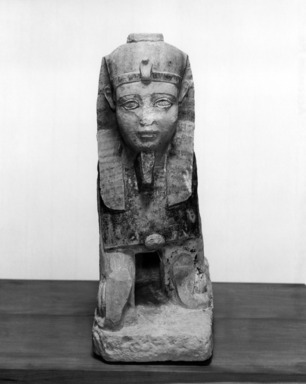
God Tutu as a Sphinx, 1st century C.E. or later. Limestone, pigment, 14 1/4 x 5 1/16 x 16 11/16 in. (36.2 x 12.8 x 42.4 cm). Brooklyn Museum, Charles Edwin Wilbour Fund, 37.1509E. Creative Commons-BY (Photo: Brooklyn Museum, 37.1509E_negA_bw.jpg)
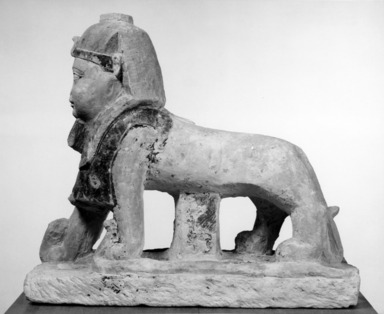
God Tutu as a Sphinx, 1st century C.E. or later. Limestone, pigment, 14 1/4 x 5 1/16 x 16 11/16 in. (36.2 x 12.8 x 42.4 cm). Brooklyn Museum, Charles Edwin Wilbour Fund, 37.1509E. Creative Commons-BY (Photo: Brooklyn Museum, 37.1509E_negC_bw.jpg)
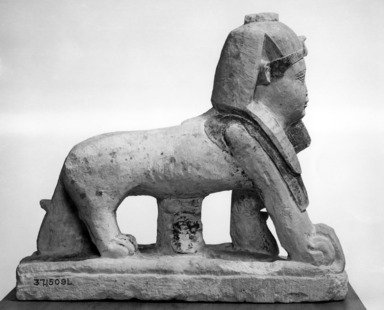
God Tutu as a Sphinx, 1st century C.E. or later. Limestone, pigment, 14 1/4 x 5 1/16 x 16 11/16 in. (36.2 x 12.8 x 42.4 cm). Brooklyn Museum, Charles Edwin Wilbour Fund, 37.1509E. Creative Commons-BY (Photo: Brooklyn Museum, 37.1509E_negD_bw.jpg)
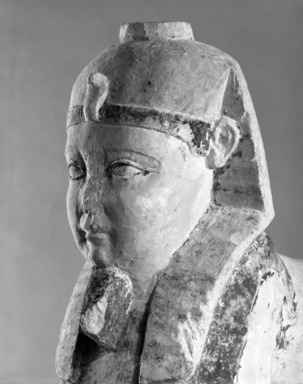
God Tutu as a Sphinx, 1st century C.E. or later. Limestone, pigment, 14 1/4 x 5 1/16 x 16 11/16 in. (36.2 x 12.8 x 42.4 cm). Brooklyn Museum, Charles Edwin Wilbour Fund, 37.1509E. Creative Commons-BY (Photo: Brooklyn Museum, 37.1509E_negG_bw.jpg)

God Tutu as a Sphinx, 1st century C.E. or later. Limestone, pigment, 14 1/4 x 5 1/16 x 16 11/16 in. (36.2 x 12.8 x 42.4 cm). Brooklyn Museum, Charles Edwin Wilbour Fund, 37.1509E. Creative Commons-BY (Photo: Brooklyn Museum, 37.1509E_negN_bw.jpg)

God Tutu as a Sphinx, 1st century C.E. or later. Limestone, pigment, 14 1/4 x 5 1/16 x 16 11/16 in. (36.2 x 12.8 x 42.4 cm). Brooklyn Museum, Charles Edwin Wilbour Fund, 37.1509E. Creative Commons-BY (Photo: Brooklyn Museum, 37.1509E_NegB_SL4.jpg)

God Tutu as a Sphinx, 1st century C.E. or later. Limestone, pigment, 14 1/4 x 5 1/16 x 16 11/16 in. (36.2 x 12.8 x 42.4 cm). Brooklyn Museum, Charles Edwin Wilbour Fund, 37.1509E. Creative Commons-BY (Photo: Brooklyn Museum, CUR.37.1509E_NegA_bw.jpg)
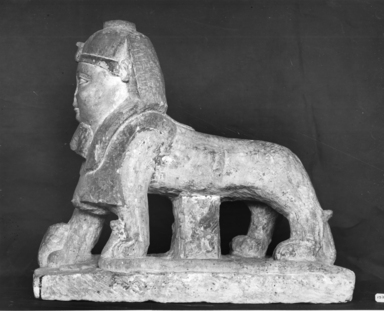
God Tutu as a Sphinx, 1st century C.E. or later. Limestone, pigment, 14 1/4 x 5 1/16 x 16 11/16 in. (36.2 x 12.8 x 42.4 cm). Brooklyn Museum, Charles Edwin Wilbour Fund, 37.1509E. Creative Commons-BY (Photo: Brooklyn Museum, CUR.37.1509E_NegB_bw.jpg)
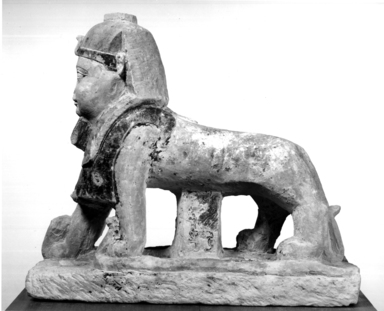
God Tutu as a Sphinx, 1st century C.E. or later. Limestone, pigment, 14 1/4 x 5 1/16 x 16 11/16 in. (36.2 x 12.8 x 42.4 cm). Brooklyn Museum, Charles Edwin Wilbour Fund, 37.1509E. Creative Commons-BY (Photo: Brooklyn Museum, CUR.37.1509E_NegC_bw.jpg)
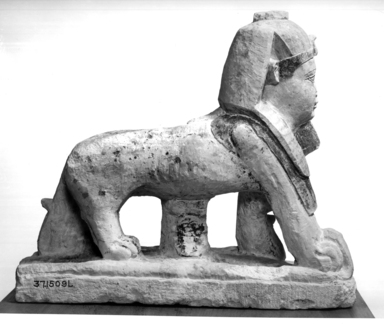
God Tutu as a Sphinx, 1st century C.E. or later. Limestone, pigment, 14 1/4 x 5 1/16 x 16 11/16 in. (36.2 x 12.8 x 42.4 cm). Brooklyn Museum, Charles Edwin Wilbour Fund, 37.1509E. Creative Commons-BY (Photo: Brooklyn Museum, CUR.37.1509E_NegD_bw.jpg)
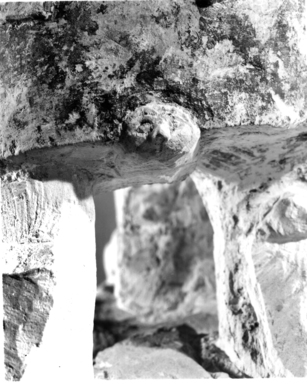
God Tutu as a Sphinx, 1st century C.E. or later. Limestone, pigment, 14 1/4 x 5 1/16 x 16 11/16 in. (36.2 x 12.8 x 42.4 cm). Brooklyn Museum, Charles Edwin Wilbour Fund, 37.1509E. Creative Commons-BY (Photo: Brooklyn Museum, CUR.37.1509E_NegE_bw.jpg)

God Tutu as a Sphinx, 1st century C.E. or later. Limestone, pigment, 14 1/4 x 5 1/16 x 16 11/16 in. (36.2 x 12.8 x 42.4 cm). Brooklyn Museum, Charles Edwin Wilbour Fund, 37.1509E. Creative Commons-BY (Photo: Brooklyn Museum, CUR.37.1509E_NegF_bw.jpg)
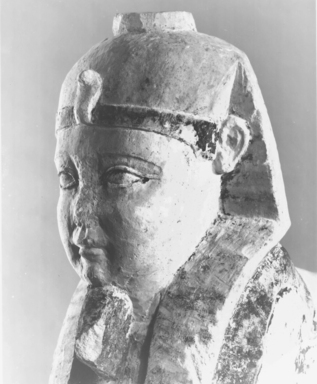
God Tutu as a Sphinx, 1st century C.E. or later. Limestone, pigment, 14 1/4 x 5 1/16 x 16 11/16 in. (36.2 x 12.8 x 42.4 cm). Brooklyn Museum, Charles Edwin Wilbour Fund, 37.1509E. Creative Commons-BY (Photo: Brooklyn Museum, CUR.37.1509E_NegG_bw.jpg)
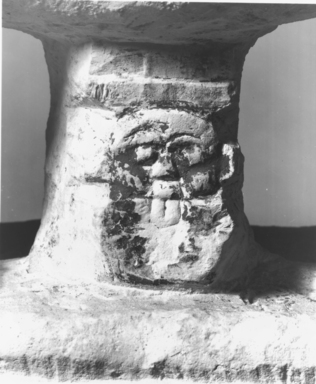
God Tutu as a Sphinx, 1st century C.E. or later. Limestone, pigment, 14 1/4 x 5 1/16 x 16 11/16 in. (36.2 x 12.8 x 42.4 cm). Brooklyn Museum, Charles Edwin Wilbour Fund, 37.1509E. Creative Commons-BY (Photo: Brooklyn Museum, CUR.37.1509E_NegH_bw.jpg)
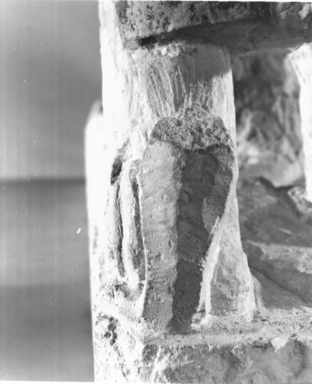
God Tutu as a Sphinx, 1st century C.E. or later. Limestone, pigment, 14 1/4 x 5 1/16 x 16 11/16 in. (36.2 x 12.8 x 42.4 cm). Brooklyn Museum, Charles Edwin Wilbour Fund, 37.1509E. Creative Commons-BY (Photo: Brooklyn Museum, CUR.37.1509E_NegI_bw.jpg)

God Tutu as a Sphinx, 1st century C.E. or later. Limestone, pigment, 14 1/4 x 5 1/16 x 16 11/16 in. (36.2 x 12.8 x 42.4 cm). Brooklyn Museum, Charles Edwin Wilbour Fund, 37.1509E. Creative Commons-BY (Photo: Brooklyn Museum, CUR.37.1509E_NegJ_bw.jpg)
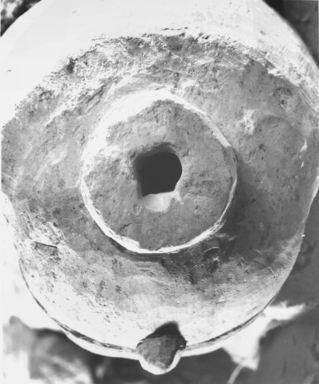
God Tutu as a Sphinx, 1st century C.E. or later. Limestone, pigment, 14 1/4 x 5 1/16 x 16 11/16 in. (36.2 x 12.8 x 42.4 cm). Brooklyn Museum, Charles Edwin Wilbour Fund, 37.1509E. Creative Commons-BY (Photo: Brooklyn Museum, CUR.37.1509E_NegK_bw.jpg)
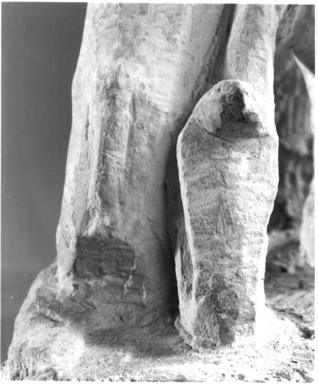
God Tutu as a Sphinx, 1st century C.E. or later. Limestone, pigment, 14 1/4 x 5 1/16 x 16 11/16 in. (36.2 x 12.8 x 42.4 cm). Brooklyn Museum, Charles Edwin Wilbour Fund, 37.1509E. Creative Commons-BY (Photo: Brooklyn Museum, CUR.37.1509E_NegL_bw.jpg)
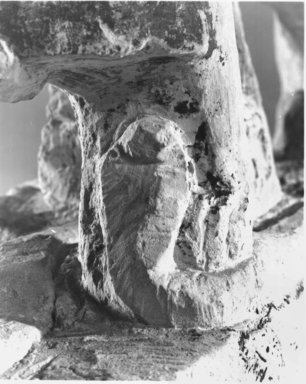
God Tutu as a Sphinx, 1st century C.E. or later. Limestone, pigment, 14 1/4 x 5 1/16 x 16 11/16 in. (36.2 x 12.8 x 42.4 cm). Brooklyn Museum, Charles Edwin Wilbour Fund, 37.1509E. Creative Commons-BY (Photo: Brooklyn Museum, CUR.37.1509E_NegM_bw.jpg)
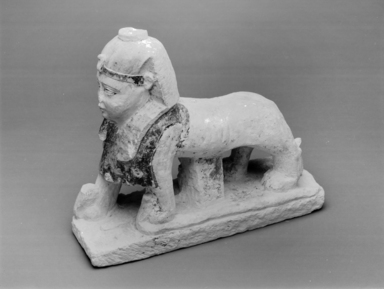
God Tutu as a Sphinx, 1st century C.E. or later. Limestone, pigment, 14 1/4 x 5 1/16 x 16 11/16 in. (36.2 x 12.8 x 42.4 cm). Brooklyn Museum, Charles Edwin Wilbour Fund, 37.1509E. Creative Commons-BY (Photo: Brooklyn Museum, CUR.37.1509E_NegN_bw.jpg)
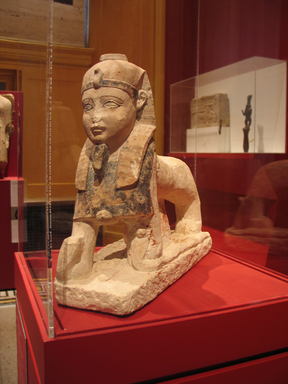
God Tutu as a Sphinx, 1st century C.E. or later. Limestone, pigment, 14 1/4 x 5 1/16 x 16 11/16 in. (36.2 x 12.8 x 42.4 cm). Brooklyn Museum, Charles Edwin Wilbour Fund, 37.1509E. Creative Commons-BY (Photo: Brooklyn Museum, CUR.37.1509E_view1_divinefelines_2013.jpg)
God Tutu as a Sphinx
Egyptian, Classical, Ancient Near Eastern Art
On View: 19th Dynasty to Roman Period, Martha A. and Robert S. Rubin Gallery, 3rd Floor


